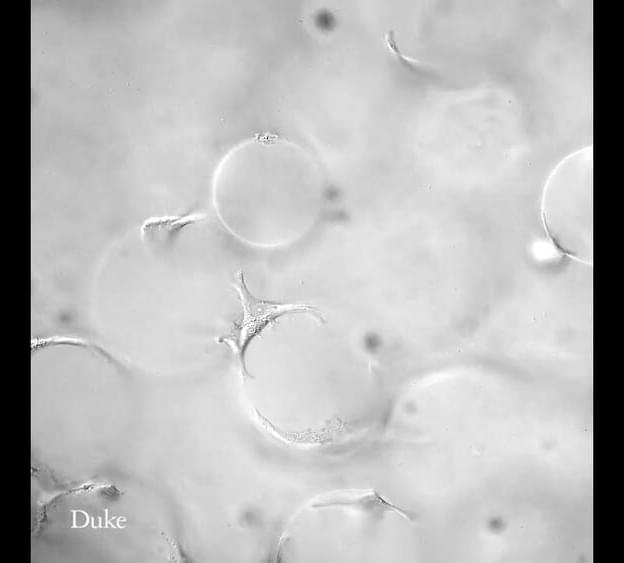Mar 23, 2023
Are brain implants the future of thinking?
Posted by Dan Breeden in categories: computing, neuroscience
Brain-computer interface technology is moving fast and Silicon Valley is moving in. Will we all soon be typing with our minds?
Brain-computer interface technology is moving fast and Silicon Valley is moving in. Will we all soon be typing with our minds?
For a while now, we’ve known there’s a complex interplay between our hormones, guts, and mental health, but untangling the most relevant connections within our bodies has proved challenging.
New research has found a single enzyme that links all three, and its presence may be responsible for depression in some women during their reproductive years.
Wuhan University medical researcher Di Li and colleagues compared the blood serum of 91 women aged between 18 and 45 years with depression and 98 without. Incredibly, those with depression had almost half the serum levels of estradiol – the primary form of estrogen our bodies use during our fertile years.

https://youtube.com/watch?v=FuzoLdrRX5Q
The technology I want to talk about today is something out of this world, but also a bit controversial There is a startup in Australia who are actually growing live human neurons and then integrating it into traditional computer chips… mind-blowing stuff!
My Gear:
Camera Sony Alpha 7 III: https://amzn.to/3dmv2O6
Lens Sony 50mm F1.8: https://amzn.to/3weJoJo.
Mic Sennheiser: https://amzn.to/3IKW5Ax.
Music from my videos: https://www.epidemicsound.com/referral/908oe4

Growing brains can be a tricky process, but growing ones that can make muscles move? That’s an incredible feat. Here’s how scientists did it.
How Close Are We to Farming Human Body Parts? — https://youtu.be/oRHxX9OW9ow.
Continue reading “This Lab-Grown Brain Made a Muscle TWITCH, Here’s How” »
Researchers at Texas A&M University have developed the first molecular therapeutic for Angelman syndrome to advance into clinical development.
In a new article, published today in Science Translational Medicine, Dr. Scott Dindot, an associate professor and EDGES Fellow in the Texas A&M School of Veterinary Medicine and Biomedical Sciences’ (VMBS) Department of Veterinary Pathobiology, and his team share the process through which they developed this novel therapeutic candidate, also known as 4.4.PS.L, or GTX-102. Dindot is also the executive director of molecular genetics at Ultragenyx, which is leading the development of GTX-102.
Angelman syndrome (AS) is a devastating, rare neurogenetic disorder that affects approximately 1 in 15,000 live births per year; the disorder is triggered by a loss of function of the maternal UBE3A gene in the brain, causing developmental delay, absent speech, movement or balance disorder, and seizures.
In this exclusive excerpt from ‘Your Brain on Art,’ we learn how sounds and images are proving to measurably heal the brain.
Changes in the brain caused by Alzheimer’s disease are associated with shortening of the telomeres—the protective caps on the ends of chromosomes that shorten as cells age—according to a new study led by Anya Topiwala of Oxford Population Health, part of the University of Oxford, UK, published March 22 in the open-access journal PLOS ONE.
Telomeres on chromosomes protect DNA from degrading, but every time a cell divides, the telomeres lose some of their length. Short telomeres are a sign of stress and cellular aging, and are also associated with a higher risk of neurological and psychiatric disorders. Currently, little is known about the links between telomere length and changes that occur in the brains of people with neurological conditions. Understanding those relationships could offer insights into the biological mechanisms that cause neurodegenerative disorders.
In the new study, researchers compared telomere length in white blood cells to results from brain MRIs and electronic health records from more than 31,000 participants in the UK Biobank, a large-scale biomedical database and research resource containing anonymized genetic, lifestyle and health information from half a million UK participants.

Watch as primordial neural cells dance across, grow into, and even move 3D scaffolds engineered to heal brain injury from stroke and other trauma. Decorating the scaffold with various nutrients and biochemical signals allow researchers to control what types of brain tissues they become.
A pair of philosophers sounded the alarm on the dystopian applications they see being ushered in by brain-computer interface (BCI) technology.
“This interface could revolutionize the way we interact with technology.”
Researchers from the University of Cambridge have created a new type of neural implant that could restore limb function in paralyzed limbs.
There have been former attempts at using neural implants to restore limb function, but these mostly failed. This is because scar tissue can envelop the electrodes over time, disrupting the connection between the device and the nerve.
Continue reading “New ‘biohybrid’ implant will restore function in paralyzed limbs” »
